 Having explored FRUiTS fashion and the sailor fuku as a fashion statement in previous Otaku Lounge articles, I’ve decided it’s time to look at another, more specific form of Japanese street fashion that has gained some recognition and popularity among J-culture fans – the Lolita subculture.
Having explored FRUiTS fashion and the sailor fuku as a fashion statement in previous Otaku Lounge articles, I’ve decided it’s time to look at another, more specific form of Japanese street fashion that has gained some recognition and popularity among J-culture fans – the Lolita subculture.
Essentially, Lolita fashion draws its inspiration from Victorian children’s clothing and 18th century French Rococo-period costumes.
The general look therefore consists primarily of puffy knee-length dresses and skirts, lacy blouses, full petticoats, and varying forms of headdresses.
Hand-held items such as dolls and plushies are sometimes carried in order to emphasise the childlike look, and make-up tends to be kept to a minimum. By adding gothic or other design elements into the mix, Lolita fashion has evolved over the years into several different sub-styles, whose devotees often view their manner of dress as an entire lifestyle rather than as a simple fashion trend.
Although the term ‘Lolita’ is a reference to Vladimir Nabokov’s famous novel revolving around a sexually precocious young girl and her relationship with the older male protagonist, the original followers of Lolita fashion, as well as the majority of Lolita fans across the world today, do not consider the style to be an explicitly sexual one.
The concept of Lolita fashion is typically thought of as cute or exquisitely charming, but most adherents believe that neither the term nor the style has anything to do with sex.
Even the gothic approach specifically, while sometimes synonymous with perceptions of bondage and other sexually-related ideas in the West, tends to be just the opposite when coupled with Lolita fashion in Japan, as Tiffany Godoy’s Style Deficit Disorder informs us: “Abstinence, girlishness, and virginity were prominent themes. Girls covered up so very little skin was exposed, and wore lace and other frilly material almost to excess. They covered their legs with knee-high socks and wore Odeko shoes, characterized by a prominent rounded toe, rather than high heels.”
While it is not known precisely how the Lolita style came to be such an identifiable form of street fashion in Japan, it is attributed to have begun in the late 1970s, when famous labels such as Pink House – then a brand which chiefly sold very feminine ‘country’ clothes for housewives – began manufacturing dresses which would have fit some of the modern standards of Lolita fashion.
However, the style did not gain a large following until visual kei bands (literally ‘visual style’) started expanding in popularity.
Japanese musical acts such as Malice Mizer incorporated dramatic make-up, strikingly unusual hair styles, and extremely elaborate and androgynous-looking costumes into their rock, punk, and metal performances. This ultra-glamorous, over-the-top aesthetic became equally as important to these bands as the sound the music itself; arguably even more so at times, and fans of this musical style began adopting similar costumes into their own street looks.
Consequently, there was a distinct line between those who wore Lolita clothing as a way of supporting the musical scene, and those who dressed Lolita as a fashion trend only.
 |
| Malice Mizer |
Although Lolita fashion peaked in the late 1990s along with visual kei, the movement has gained enough momentum that a variety of stores and clothing lines exist purely as a means of selling and showcasing Lolita clothing in all of its varieties. The subculture has also gained acknowledgement outside of Japan, helped along in its popularisation by the depiction of Lolita clothing in music videos, film, and manga/anime.
Like most other styles of Japanese street fashion, Lolita fashion is constantly evolving.
There are numerous different sub-types within the general look, and it is also common to see style crossovers, so that despite the ‘rules’ of Lolita-wear, it really is up to the individual to determine what he or she wishes to be. For this reason, it is almost impossible to categorize every single particular Lolita sub-type – over the years I’ve seen Country, Hime/Princess, Chinese, Ero, Cyberpunk, Sailor, Decora, even Pirate Lolita. Nonetheless, there are several well-defined styles that have now been drawn into the fabric of the overall subculture.
Below is a listing of some of these main Lolita styles with generalised information on what makes each of them fit into their specific grouping, along with examples drawn from popular culture.
Ama (Sweet) Lolita
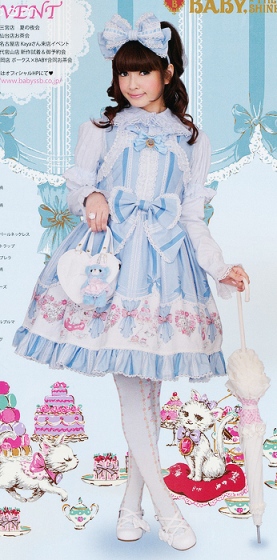 |
Just as it sounds, the cutesy adorable style. It is heavily influenced by Rococo clothing in particular, and focuses mostly on the child and fantasy-like aspects of Lolita culture. Think heaps of white and pastels, especially baby blue and baby pink, and patterns incorporating cakes and candy. It usually incorporates a lot of ribbons, bows and frills, and bouncy curly-haired pigtails are also commonplace. Chii from the Chobits manga and anime wears several Sweet-Lolita inspired dresses in the official series artwork, and Momoko from the Japanese live-action film Kamikaze Girls also dresses in this style. Popular brands are Metamorphose temps de fille and Baby, the Stars Shine Bright.
Gothic Lolita
Influenced primarily by Victorian-inspired dress, Gothic Lolita is obviously a lot darker than many other styles. Black and white is the most common colour combination, but rich and dark shades of many colours can still be used. Make-up is sometimes heavier than styles like Sweet Lolita, such as smoky eyes and a deeper lip colour, but natural is still often the key, and things we might expect like a powder-white face and deep red or black lipstick is not particularly common. Death Note’s Misa sometimes dresses in Gothic Lolita-esque outfits, as does Victorique from Gosick. Keiko from Japanese band Kalafina has also appeared several times in Japanese magazines like KERA and Gothic & Lolita Bible sporting the Gothic Lolita look. Moi-meme-Moitie, created by Malice Mizer’s co-founder Mana, is an especially well-known brand, as is a line from Baby, the Stars Shine Bright called Alice and the Pirates.
Punk Lolita
A slightly more eclectic look involving tattered and plaid fabrics, chunky boots, and plenty of layering combined with safety-pins, chains and studs. Dark red is a fairly common colour, as is black and white stripes. It’s actually not as easy as it looks to carry off, since the style is usually not as clean or traditionally elegant as many of the other Lolita styles are. Japanese pop/rock singer Nana Kitade has previously appeared in Punk Lolita clothing, as in the first volume of the English version of Gothic & Lolita Bible. Peace Now, Putumayo, and h.NAOTO all supply plenty of edgy Punk outfits.
Classic Lolita
One of the most mature and refined of the Lolita styles. It is greatly influenced by the Renaissance and Elizabethan eras, although Baroque, Rococo, Victorian, and Edwardian influences can often be seen as well. Simplicity and modest elegance are key, so high-neck collars, empire waists, and A-line skirts are the norm, usually in soft patterns and in neutral or muted colour palettes. Lace and frills are not quite as prominent, so the silhouette tends to be slenderer than some of the other styles. Victorian Maiden, Juliette et Justine, Mary Magdalene, and Innocent World each cater to the Classic customer.
Wa (Japanese) Lolita
Traditional Japanese clothing combined with Lolita-style dress. Usually this is achieved by way of mixing the typical Lolita bell-shaped silhouette with long kimono swinging sleeves, obi sashes, geta or zori sandals, and fabrics with flower or crane prints. Many of Yuuko’s outfits from the manga and anime xxxHolic are very reminiscent of Wa Lolita. Because there are no brands that cater specifically to this style, wearers are more likely to create their look from scratch, using actual kimono or yukata prints and cutting/sewing them together with petticoats and other materials.
Guro Lolita
Possibly one of the only Lolita types not suited to tea parties. ‘Guro’ is short for grotesque, and grotesque often translates into bloody. The image of a battered or broken doll is an apt description for this Lolita style; bandages, eye-patches, and spatters of fake blood are commonly used atop white fabrics in order to create a good contrast, and accessories such as similarly-styled dolls, teddy-bears and the like help to complete the look. Since the Guro style usually calls for ripping and staining, cheaper Lolita brands from places like Bodyline or second-hand clothing is used most often.
Ouji (Prince) Lolita
The most common ‘masculine’ version of the Lolita style, Ouji or Prince Lolita (sometimes also referred to as Kodona or Boy-Style Lolita) is very Victorian-inspired, and makes use of ruffled shirts and cravats beneath a vest or waistcoat, knickerbockers, over-the-knee socks, and top hats of varying sizes. The look is sometimes cute and child-like, with plenty of white lace and puffed shoulders, but it can also be mature and dark, with tall collars and buttoned swallowtail jackets. Black, white, burgundy, and deep blue are some of the most frequently used colours. Some of Ciel Phantomhive’s outfits from Kuroshitsuji/Black Butler fit into the Ouji Lolita category, as well as a few of Oz’s from Pandora Hearts. While there are currently no shops that exclusively sell Ouji Lolita clothing, brands like Alice and the Pirates, Innocent World, Moi-Même-Moitié, and Atelier Boz sometimes stock items that can easily be mixed and matched to create complete outfits.


































































































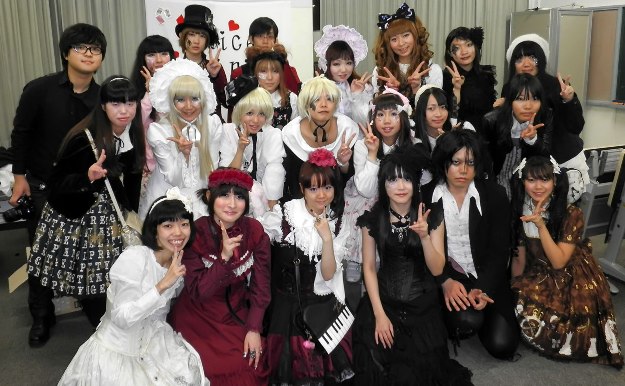
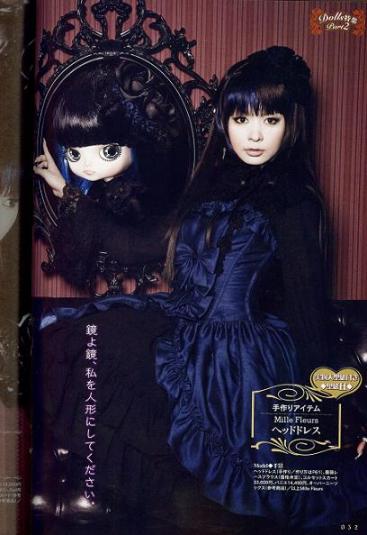
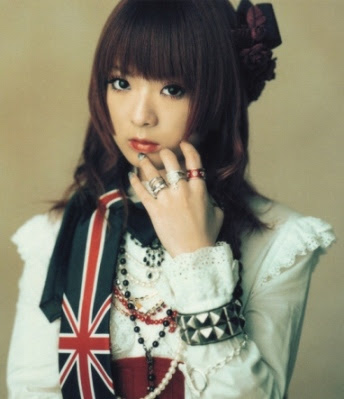
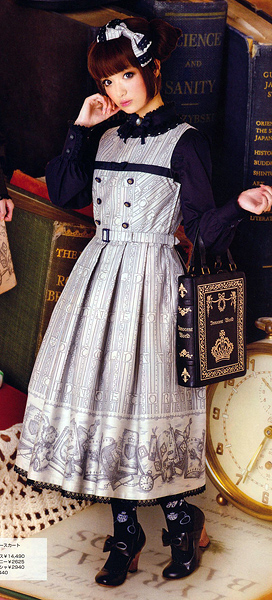
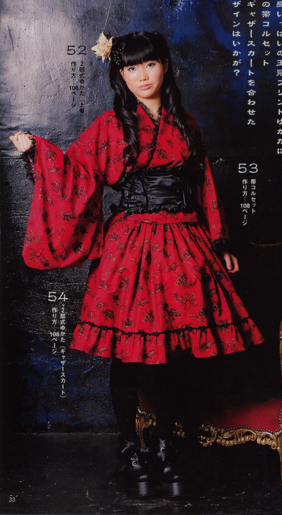
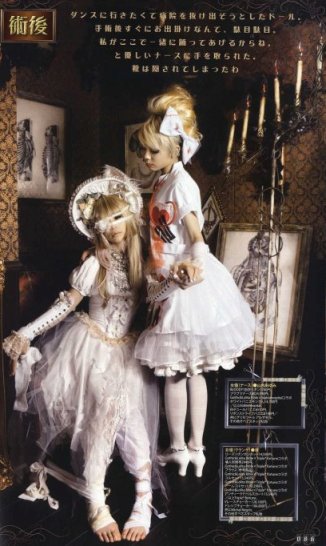
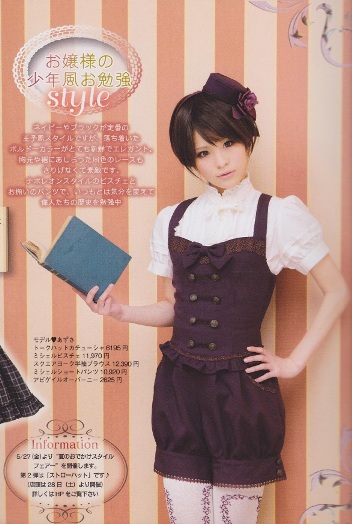










1 Comment